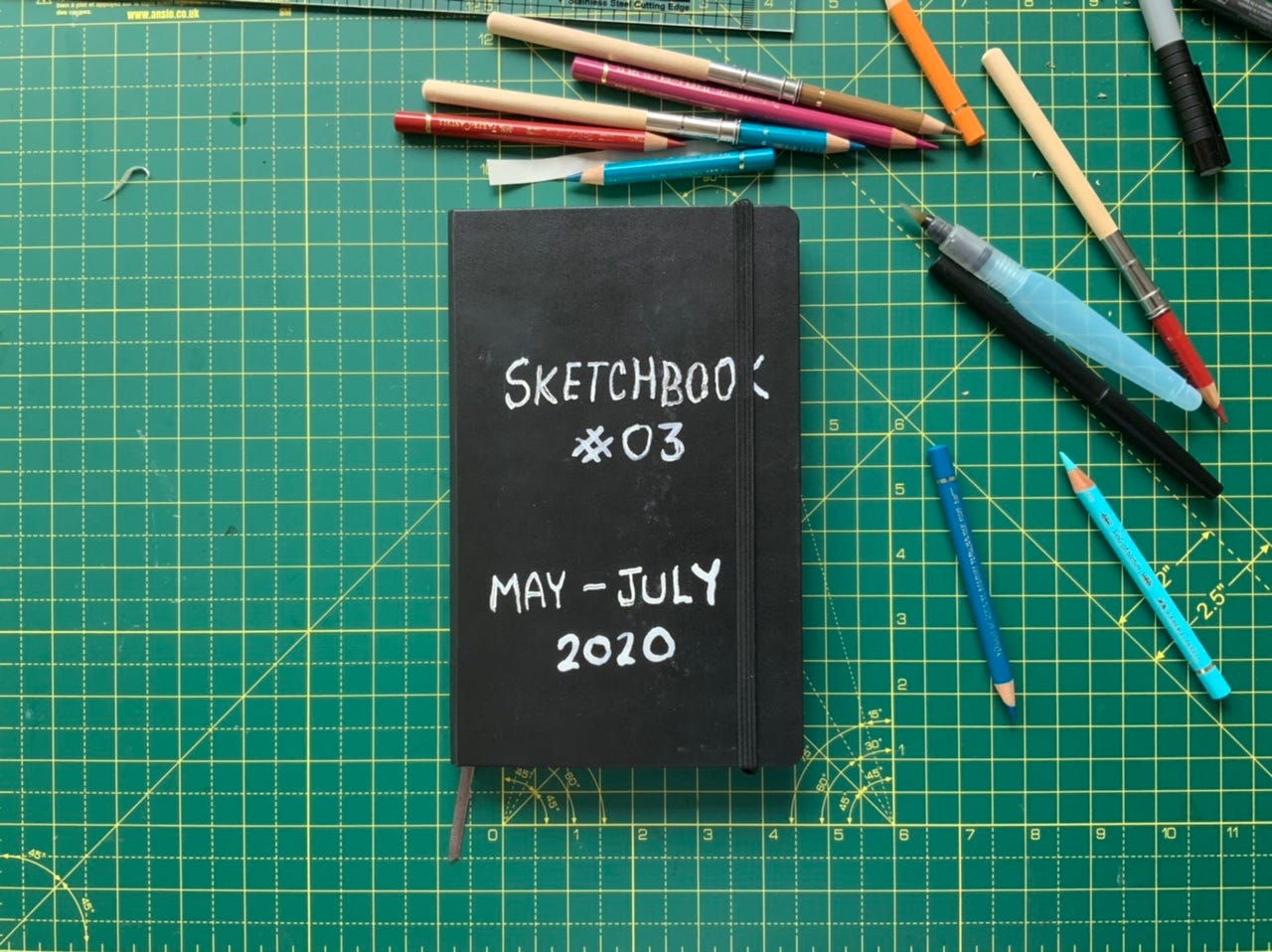
My third sketchbook of 2020 is filled!
I’ve developed a pretty satisfying groove starting each day with a strong coffee, filling a couple of pages — hopefully a few more on a weekend.
I’m figuring out what a sketchbook is to me by trying out lots of formats. The first book was almost entirely collage; the second, I began to draw, mostly in pen. This latest book is mostly pencil, functioning both as a sketchbook and a journal.
There are some lessons I’m learning which I’m going to share with you in today’s letter.
Warm-up
The first page is always something to warm-up my hands.
Pro tip 1: do not try and draw anything without warming-up first! Like a pianist or an athlete, those muscles and joints need stretching — especially if you draw first thing in the morning.
Skip the warm-up and you end up with abominations like this:
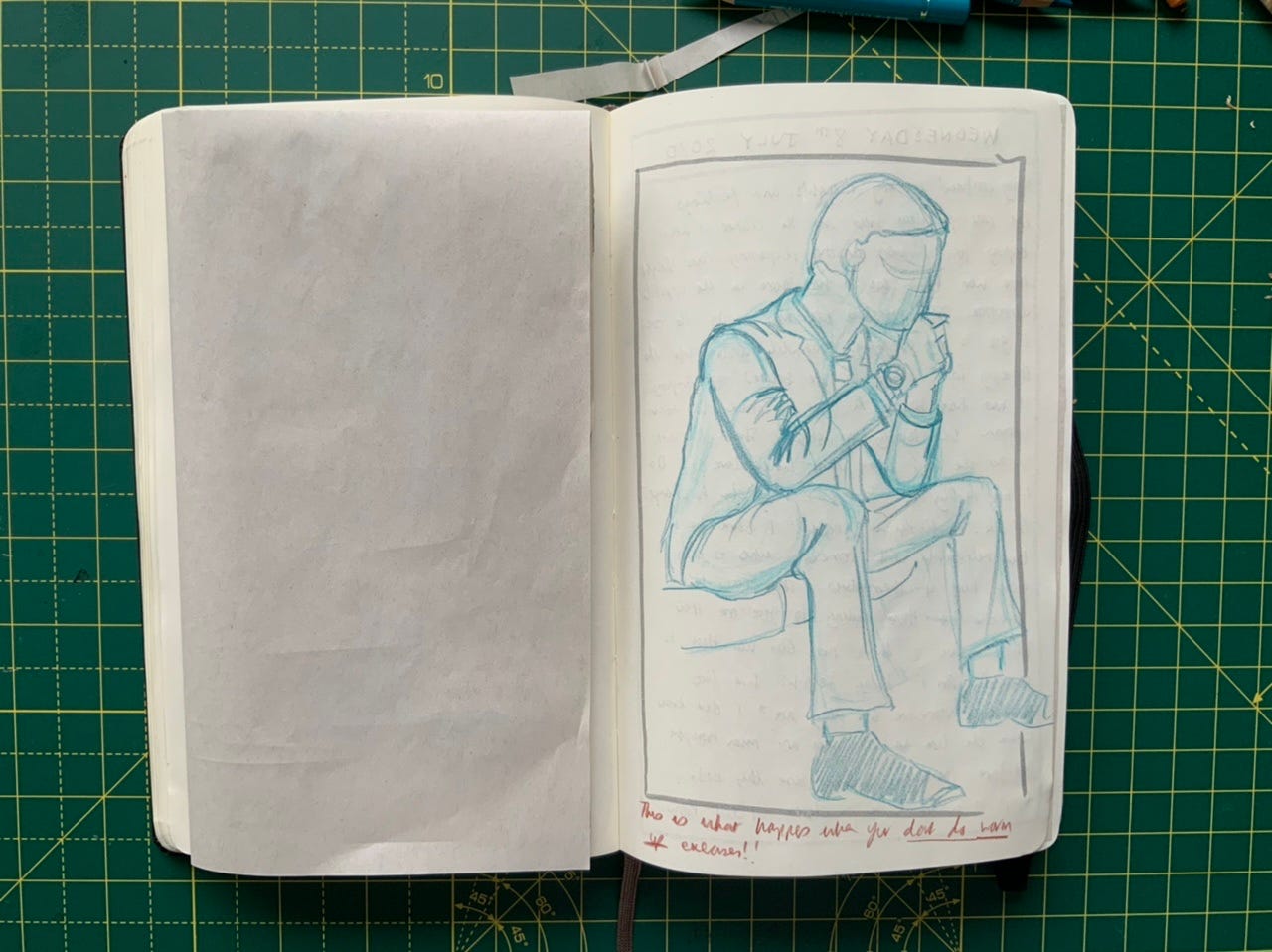
As I’ve written in previous letters, spirals (#62) and volumetric shapes (#76) are great warm-ups. In the last few weeks I’ve enjoyed trying to draw hands.
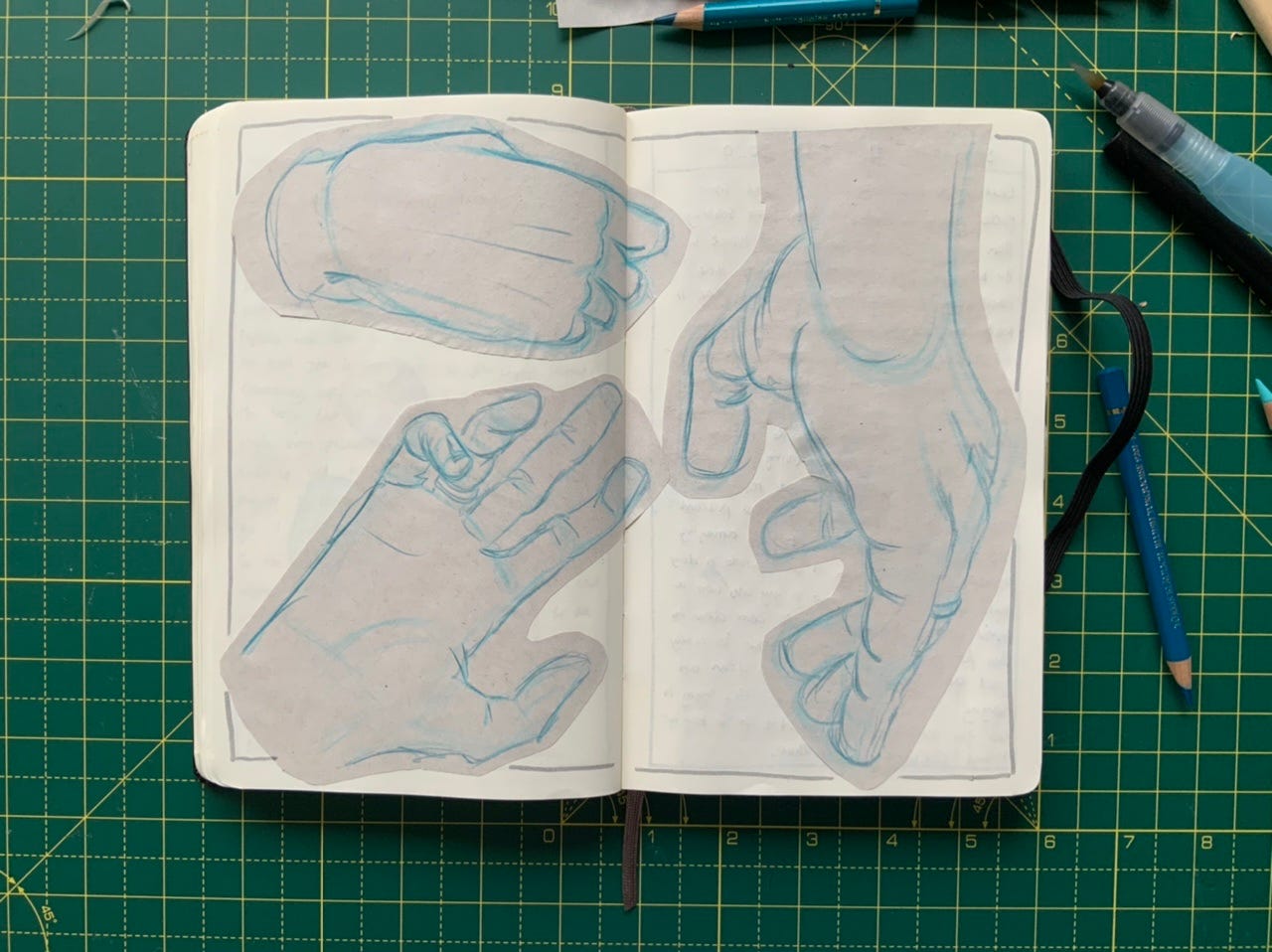
Diary
On the second page I’ve continued to keep a record of the previous day. I stopped doing Lynda Barry’s review frame (#71) last month. It’s great — it really made me a keener observer of the world around me — but it was just too damn time-consuming.
For a while in June and early July, I reverted to free-writing a page of text, but I don’t get satisfaction from either writing or reading those pages.
Then a couple of weeks back I began drawing mini comics again (#71) and it’s my favourite of them all.
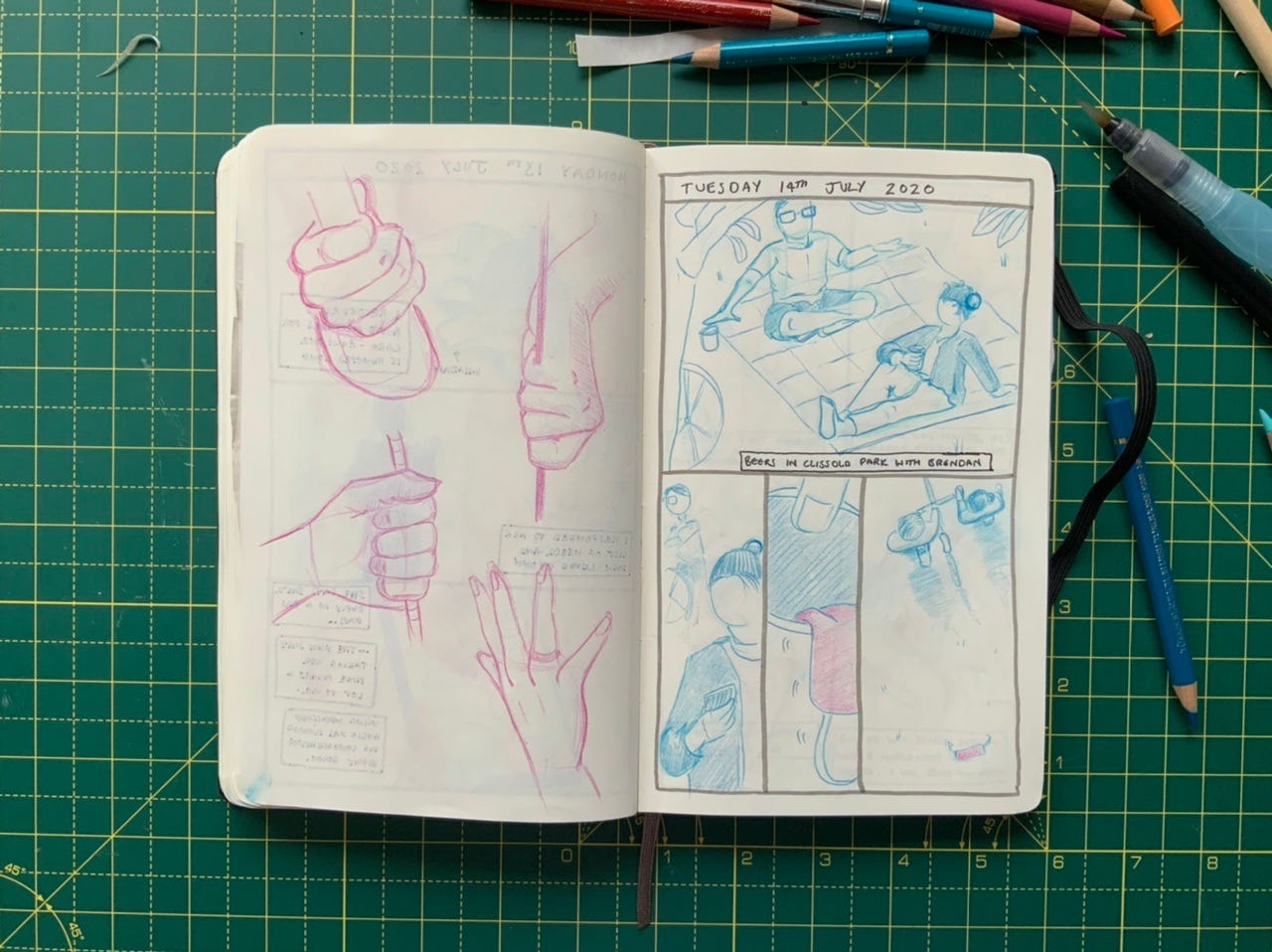
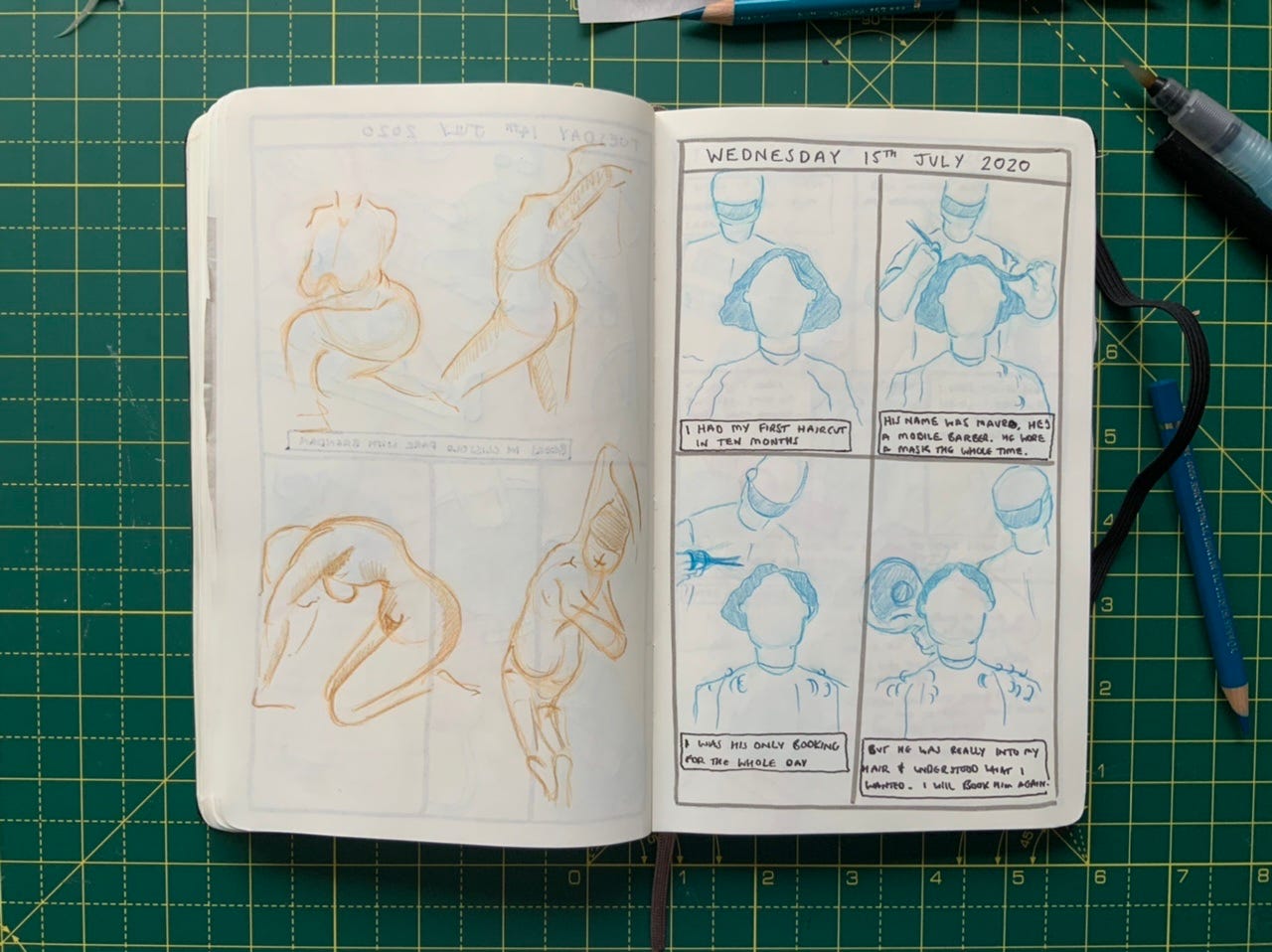
Pro-tip #2: the method you use to journal changes what you notice and what interests you.
When doing Lynda Barry’s method, which requires listing things you see or hear, you learn to ‘collect’ moments; when you’re free-writing, you become more reflective over time.
Comics are great at both recording a moment and at exploring my internal world, plus I can practice drawing figures and building stories in sequence.
Meanwhile, I’ve found that when I draw a comic a day, I become more excited about drawing comics generally; when I stop, that excitement disappears.
My struggle is that the page is too small to draw the figures the size I feel most comfortable with, so my characters appear stiff and flat.
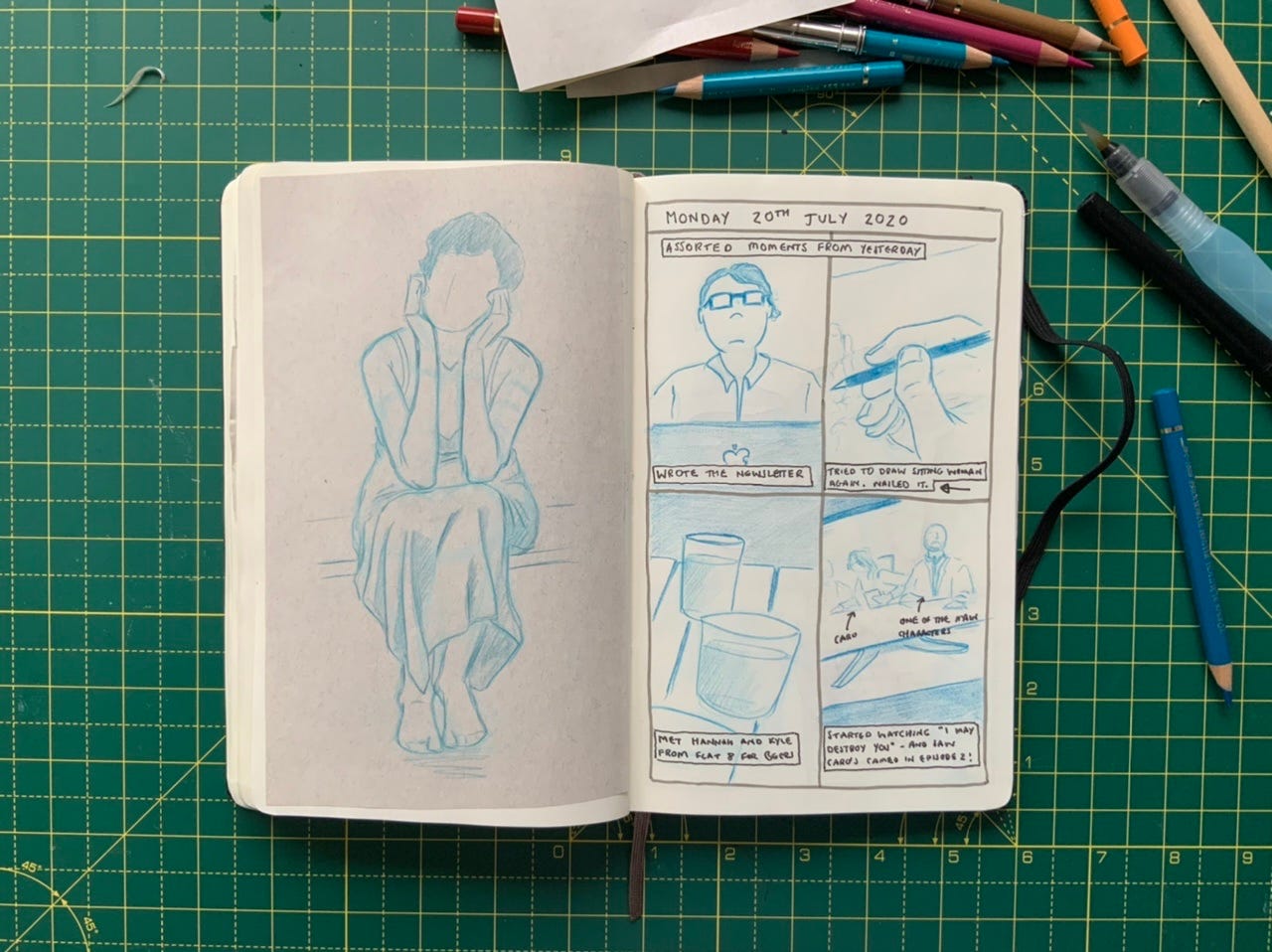
Practice
The real purpose of a sketchbook, of course, is practice and at least a few days each week I let myself linger to fill more pages.
Back in April, I wrote a really long letter about active drawing and intentional practice (#67) — and then promptly stopped following my own advice.
I continued figure drawing but if I wasn’t happy with my sketch I just moved onto a new pose, without stopping to consider where I had gone wrong.
Pro-tip #3: intentional practice is a three-step process of 1) making a mistake, 2) identifying the mistake, and 3) re-drawing the pose until you get it right.
This is a discipline but it pays dividends.
The figure on the left-hand page above (one of my favourites in this whole sketchbook) took me nearly a week to get right. I glue my failed sketches in there too so I can’t forget this.
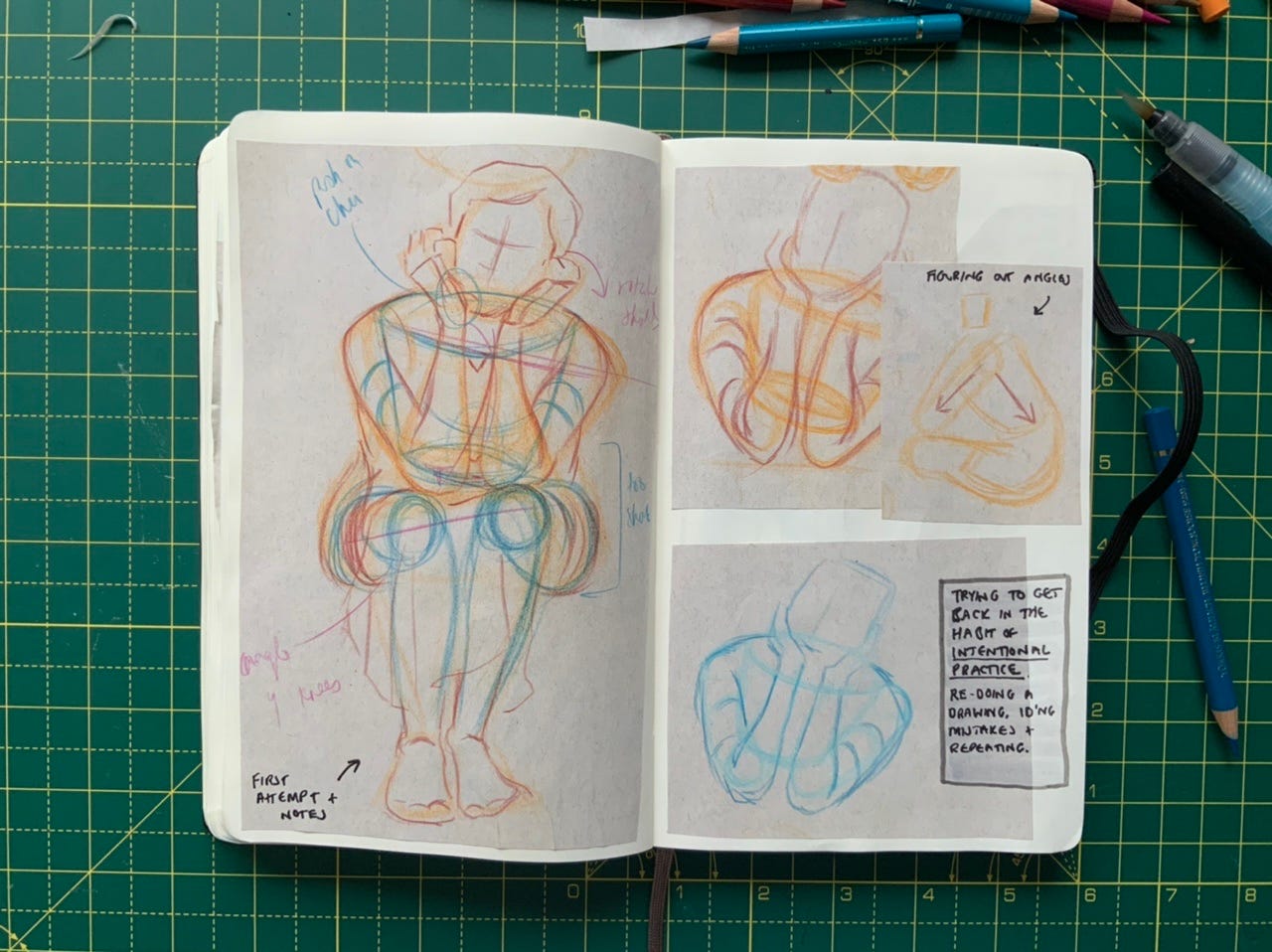
After drawing a pose for the first time I’ll annotate it, noting the mistakes I’ve made. I also find it’s helpful to draw over the volumetric shapes that make up the body, and see what angles I can exaggerate to make the pose more expressive.
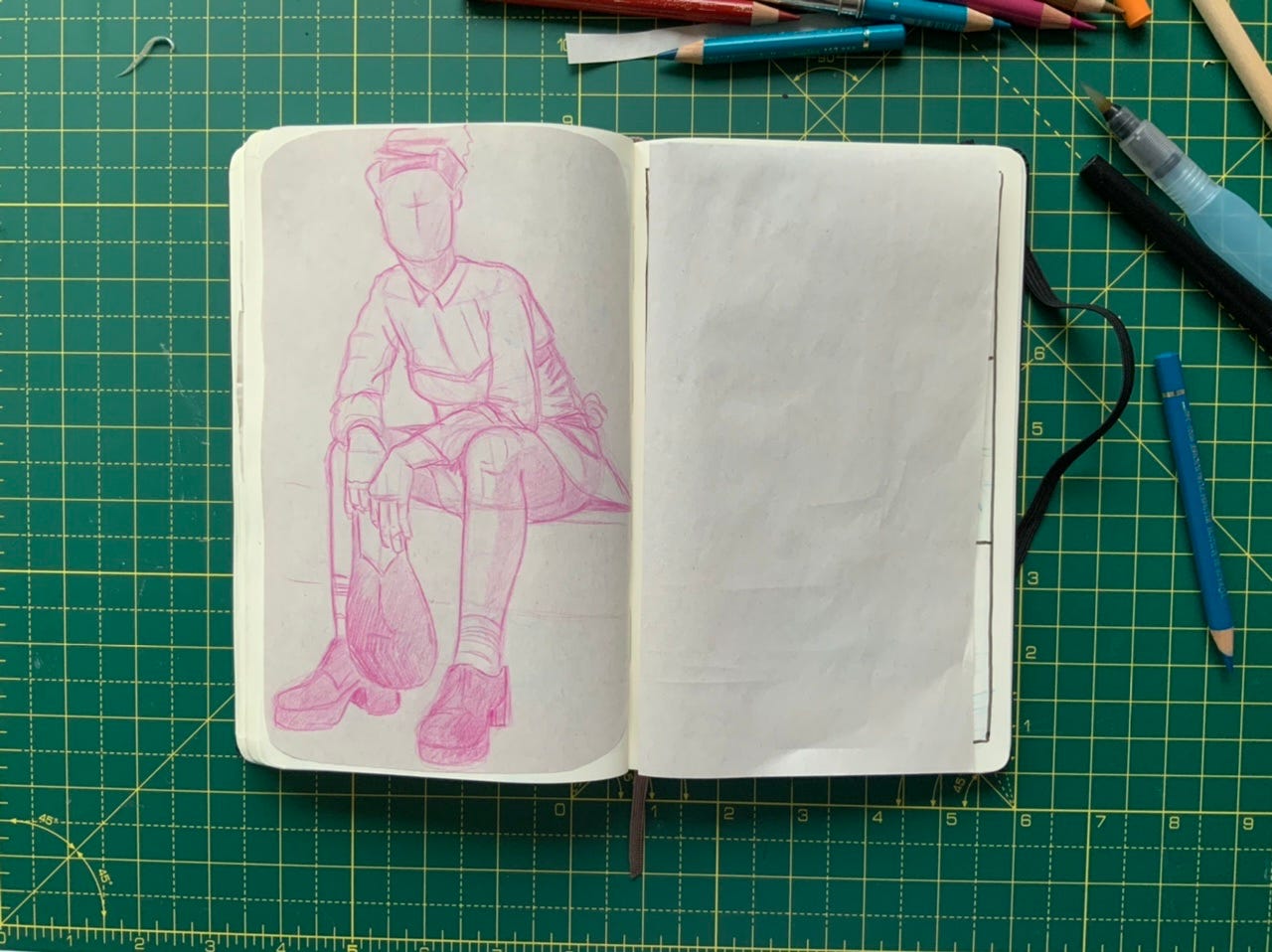
It took nearly a dozen attempts to get this running man into something I like — I’m still not that happy with the final drawing.
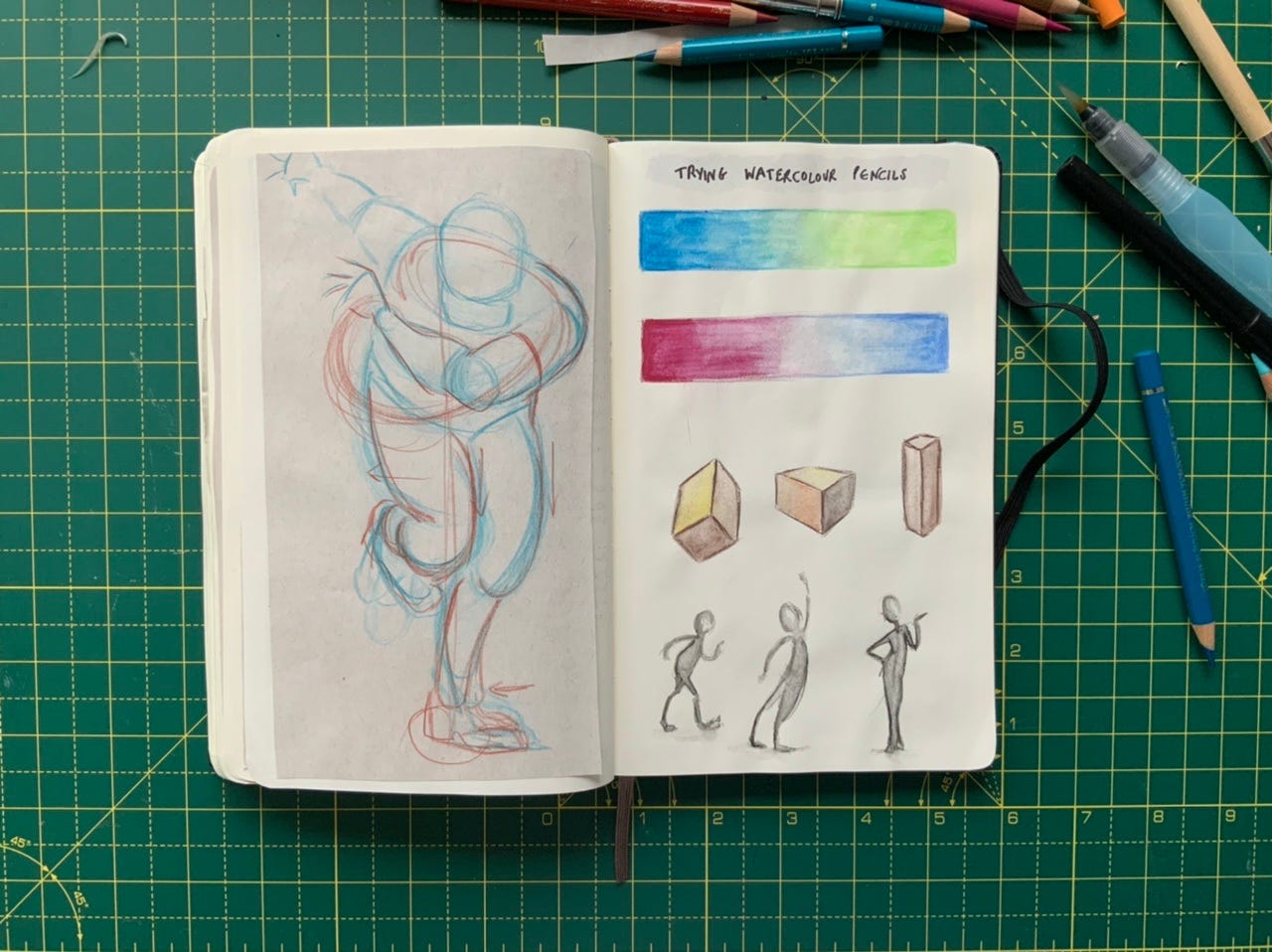
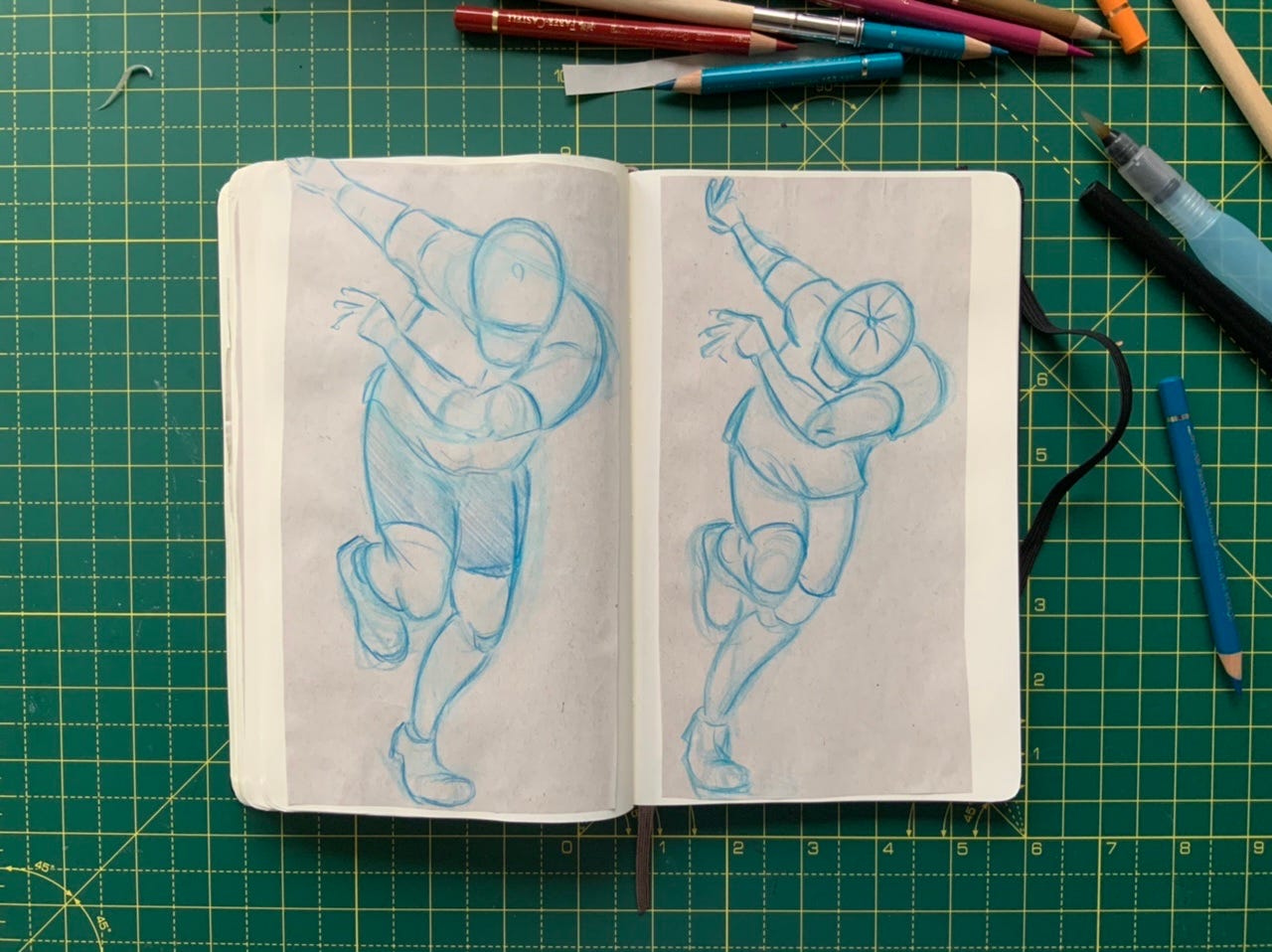
Filling sketchbooks is still my one and only creative goal for 2020 (#53). It grounds me, gives me a sense of incremental progress in something, a personal record of a year that history will not forget, and — on those occasional days when I draw something good — something to feel proud of.
Remember: “my sketchbook” is a legitimate answer to the question “what are you working on right now?”
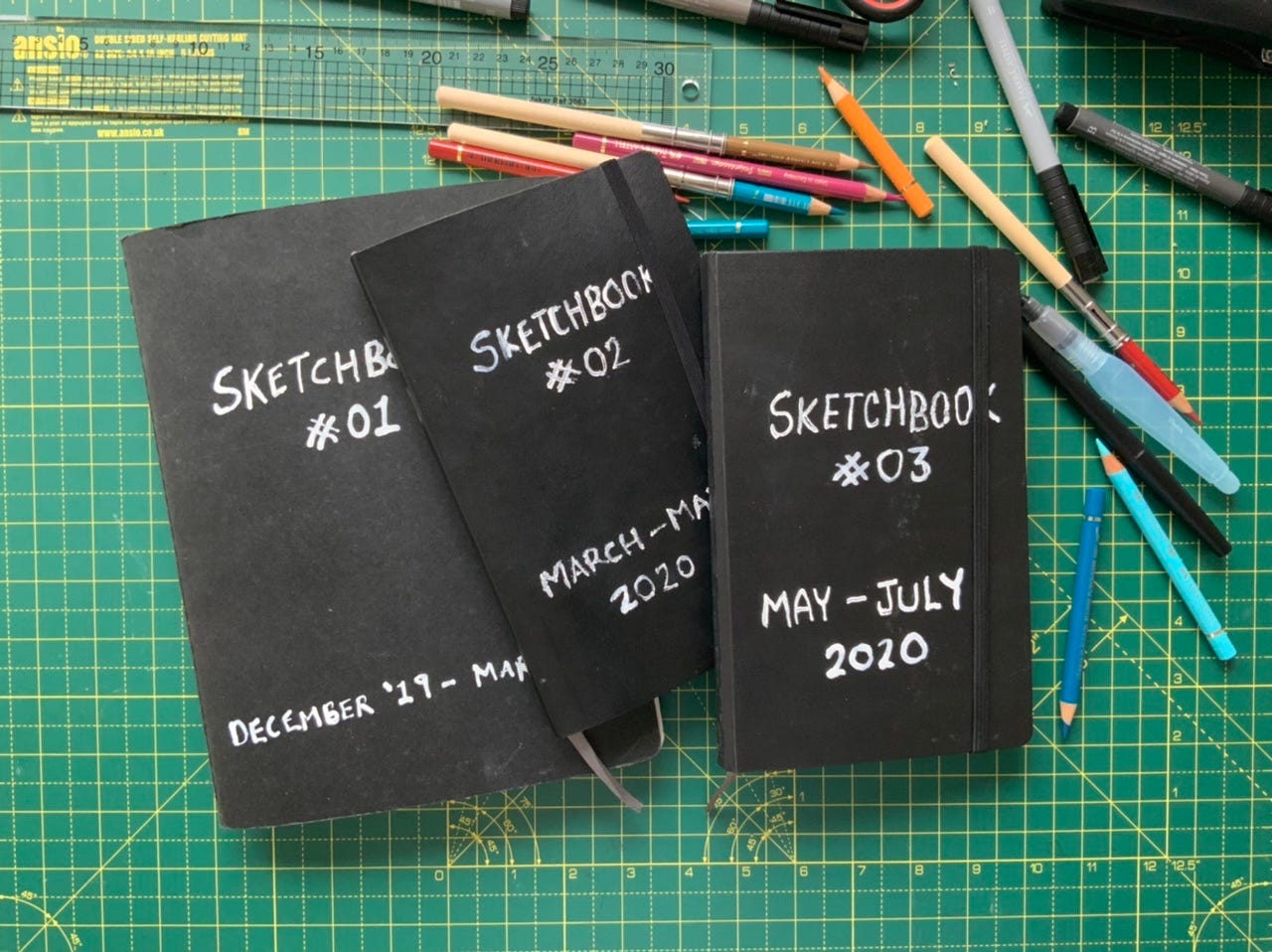
Until next Sunday,



Hello Adam, I read your #17 and found it quite interesting. Your article helped me focus on exactly what am I trying to strengthen by a daily practice. For me it’s my ability to think and express myself expressively in cinematic terms. What I came up with is several times a week, perhaps every day I will select either a video shot of mine or alternatively a still photo or a sequence of photos. I’ll study them for meaning and emotion. Hopefully I’ll not get hung up on technique or how I would improve them. I intend to stick with meaning and emotion. When something comes to me I’ll write a sentence or two, no more than a short paragraph (five sentences tops) that describes, or extends something in my image. Then I’ll take what I’ve wrote and rummage through my photos and videos looking for a different image that reflects what I just wrote. That becomes image to word and back to image. I’ll keep you posted on how my expierment in practice works out.
I’m a filmmaker and photographer trying to keep some semblance of forward motion during this time of pandemic and political crisis. Something landed for me in your current post, a daily practice. “ the method you use to journal changes what you notice and what interests you.” As I find that having a good question is helpful in getting a good answer. So my question to myself is - what I can come up with to adapt your practice to my medium(s). Thanks for the insight and inspiration.